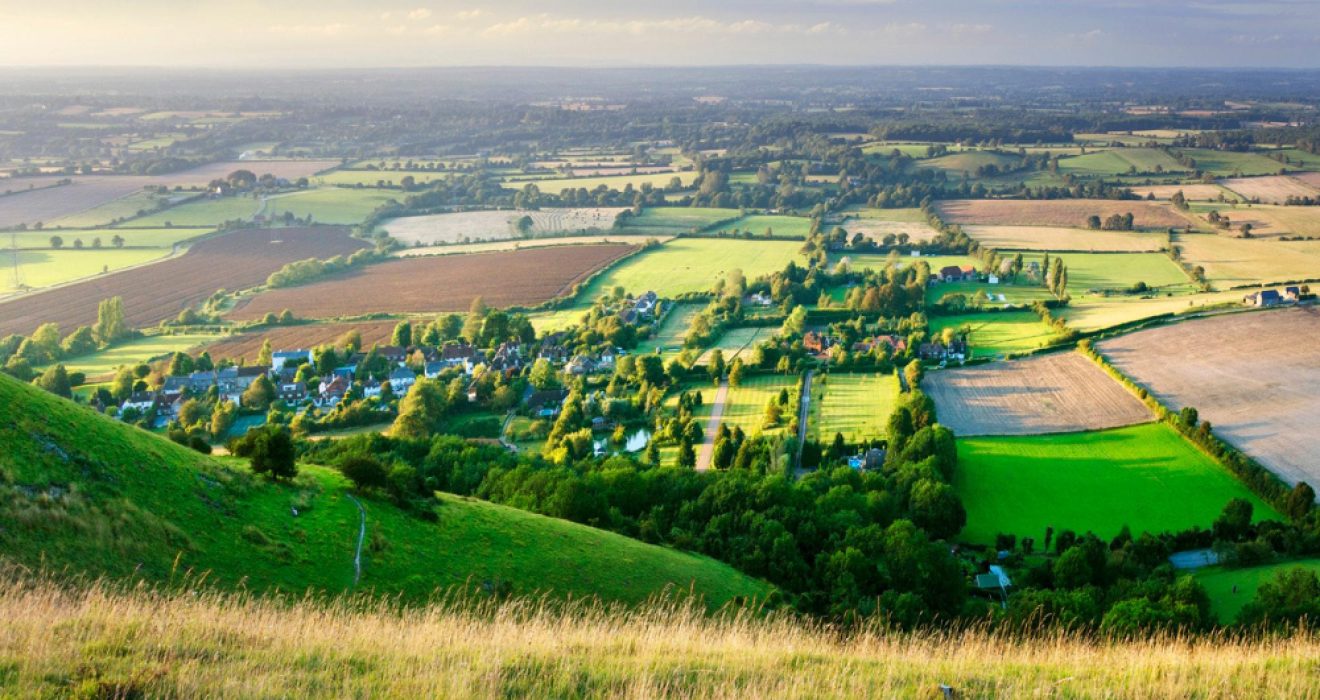As worldwide temperatures rise, cities around the world are dealing with the issue of urban heat islands, in which concrete and asphalt amplify summer heat. A new study conducted by academics from the University of Surrey and Southeast University (China) demonstrates that rural belts around cities can dramatically lower urban temperatures. Using over twenty years of data, researchers found that these rural areas might reduce city temperatures by up to 0.5°C. This article looks at the study’s outcomes, the mechanisms underlying the cooling implications, and the consequences for urban development.
Research Data and Methodology:
The study, undertaken by the University of Surrey’s Global Centre for Clean Air Research (GCARE) and Southeast University, examined 20 years of satellite data from 30 Chinese cities. Researchers examined surface temperatures and land use trends to better understand how surrounding rural areas influence urban temperatures. The study focused on the amount and type of rural terrain around cities, as well as how these characteristics impact the cooling effect on metropolitan centers.
The study used advanced remote sensing equipment to monitor land surface temperatures and map the geographic distribution of land cover types. By combining these data with meteorology information, the investigators were able to develop complete models that accurately describe the connection between rural land use and city temperatures.
Key Results:
The Scope of Rural Belts:
The study discovered that rural belts encircling cities could decrease metropolitan temperatures by up to 0.5 °C. The greatest substantial cooling benefits were noticed when the rural belt covered at least half of the city’s circle. This finding emphasizes the need to protect and improve rural regions near metropolitan centers as an organic cooling method.
Aspects of Land Use:
Various kinds of land use in rural regions have different effects on urban temperature. The study revealed that:
- Joined-up Areas of Rural Land: Creating contiguous patches of rural land instead of fragmented ones results in more efficient cooling.
- Woodland Planting: Spreading additional forests throughout a city helps to greatly reduce urban heat.
- Broader Water Bodies: Having fewer, larger lakes rather than numerous tiny water bodies improves cooling benefits.
Professor Shi-Jie Cao, the lead author and a visiting professor at GCARE, stressed the significance of these discoveries. He remarked, “We frequently emphasize how green areas, marshes, and waterways help cool cities. However, urban land is limited, making it difficult to implement these strategies. We have now demonstrated how land usage outside a city can have a significant impact on temperatures downtown.”
How Rural Belts Cool Cities:
Urban heat islands form due to a dense network of buildings, roads, and other structures that absorb and hold heat. As warm air ascends in a city, it forms a low-pressure zone near the ground. This low pressure pushes colder air from the neighboring countryside into the city center. The size of the urban area and the land coverage of the surrounding rural areas have a substantial impact on this process.
The cooling effect is mostly caused by the difference in humidity and temperature levels between rural and urban areas. Rural areas have lower ambient temperatures and higher rates of evapotranspiration because they have more vegetation and fewer impermeable surfaces. This provides a reservoir of colder, more humid air that can be drawn into metropolitan areas, resulting in natural cooling.
Comprehensive Review:
To establish the precise causes, experts studied the areas surrounding 30 Chinese towns between 2000 and 2020. They used satellite information to detect ground temperatures and examine land use patterns. This detailed analysis enabled researchers to pinpoint specific land use patterns that result in the greatest cooling effects.
By investigating towns of varied sizes and geographical regions, the study managed to capture an array of meteorological and environmental factors. This variability provides ample proof that the cooling impacts caused by rural belts stay the same across situations, strengthening the findings’ general application.
Professor Prashant Kumar, a co-author of the paper and the founding director of GCARE, described the significance of their findings: “We had previously thought that belts of agricultural land around a city could assist cool down the urban center. Now, owing to our extensive analysis, we can determine which types of land use have the greatest impact. We hope that our findings can assist planners and governments make urban populations more adaptable to rising global temperatures. Our findings indicate that if we desire to cool our cities, we must combine urban and rural development efforts.
Future Prospects in Research:
While this study revealed useful insights, more research is required to investigate the long-term effects and efficacy of various rural land use techniques. Furthermore, similar research conducted in different geographic places could assist refine and tailor the suggestions to different meteorological and urban settings. As cities across the world grapple with the difficulties of climate change, the relationship between urban and rural regions will become increasingly vital in creating environmentally friendly and habitable metropolitan settings.
Conclusion:
The study by the University of Surrey and Southeast University provides persuasive evidence that rural belts around cities can play an important role in lowering urban temperatures. Understanding the mechanisms underlying this cooling effect and applying the study’s suggestions will allow urban planners and politicians to develop resilient and environmentally friendly cities. As global temperatures keep rising, innovative and integrated approaches to both urban and rural design will be critical for minimizing the effects of heat island cities.
The findings highlight the importance of a comprehensive approach to urban development that takes advantage of rural regions’ inherent cooling potential. Cities that preserve and improve these green belts can provide healthier, more pleasant environments for their residents. Collaboration between rural and urban planning is not only necessary but also strategically advantageous in combating global warming and urban heating.

